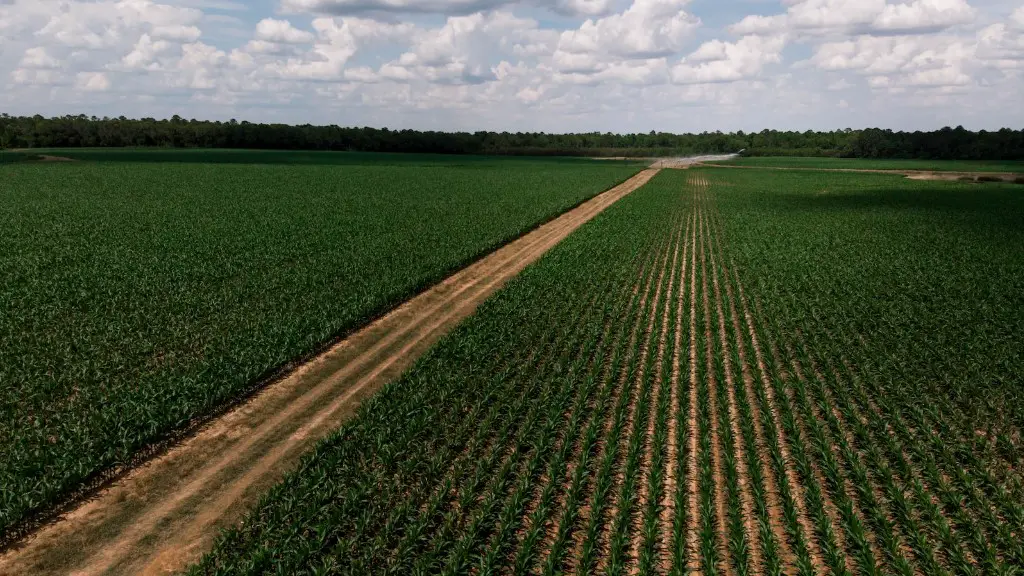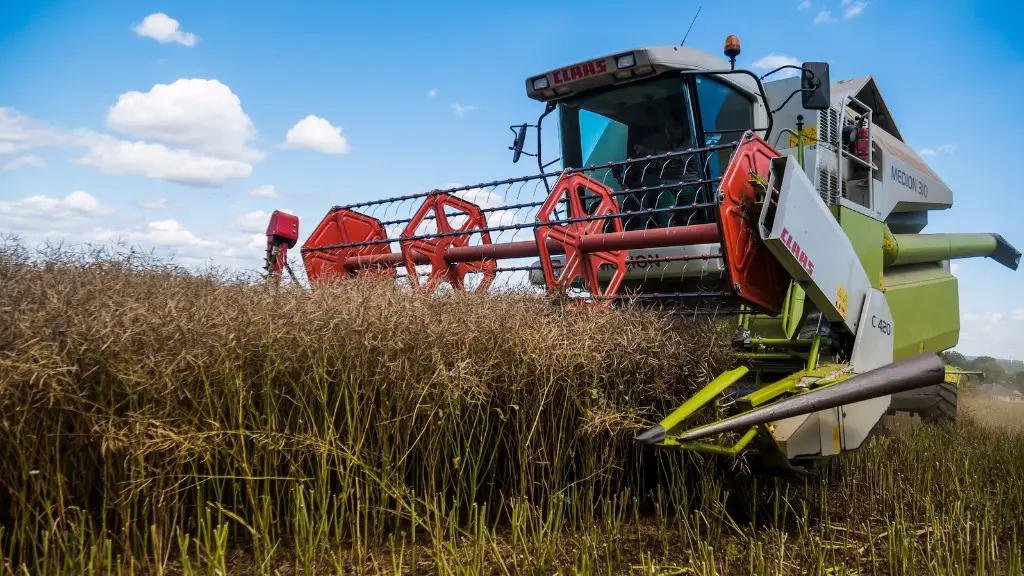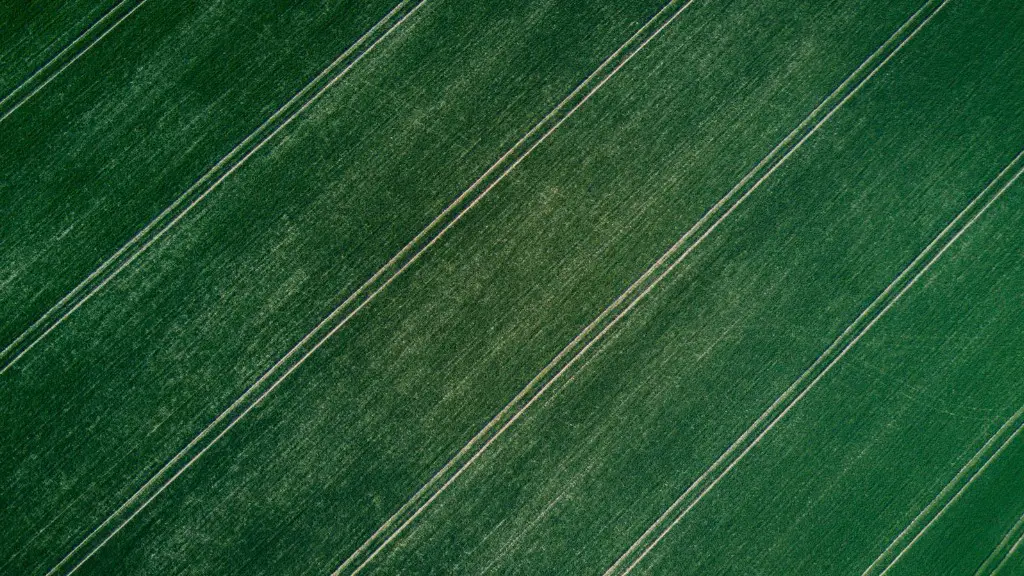Urban Agriculture is a term used to describe the cultivation and production of food in urban areas, using traditional and environmentally sustainable methods. It is a form of experiential learning, bringing communities together to learn about the environment, nutrition, and sustainability. It is a way of connecting the urban landscape with the rural landscape, bridging the gap between city and country by creating community gardens, raising awareness about food waste and promoting farm-to-table initiatives.
Urban Agriculture brings people together in a spirit of collaboration. It allows residents to enjoy the benefits of local and organic food production, as well as teaching them how to grow their own food. It can help to promote healthy eating through education, such as teaching children and adults how to prepare nutritious meals, or providing CSA programs that allow people to buy locally and sustainably-grown produce. In addition, urban gardens create economic and employment opportunities in the city, helping to build the economy and reduce unemployment.
Urban Agriculture also has the potential to reduce crime and gang activity in an area, as it provides an alternative source of income and an engaging activity for youth. Additionally, urban gardens provide numerous health benefits by incorporating natural elements such as trees and flowers into city life, as well as providing places for physical activity and relaxation in green spaces. It provides people with access to fresh, affordable food, creating healthier and more sustainable communities.
Urban Agriculture has a great potential to bring real economic and environmental benefits to urban areas. Through the implementation of urban agriculture initiatives, cities can create more vibrant and accessible food systems, revitalize local economies, and empower communities with knowledge and resources to improve food access and food security.
Urban Agriculture is a concept that can create stronger, more sustainable, and more equitable communities, by reconnecting people with food production and teaching them about the environment, nutrition, and sustainability. It has the potential to bridge the gap between rural and urban communities, and provide economic opportunities, health benefits, and a greater sense of community to individuals and cities alike.
Impact of Urban Agriculture
Urban Agriculture can have a positive impact on the health and well-being of individuals and communities alike. Food grown and harvested locally is fresher and more nutritious than food purchased from commercial sources, and it supports local farmers, businesses, and the environment. In addition, access to local food can increase the availability of affordable fruits and vegetables in areas where there is limited access, providing vital access to necessary nutrition.
Urban Agriculture has a number of environmental benefits including improving soil health, reducing water usage through efficient irrigation systems, providing natural pest control and reducing the amount of transport required to obtain food. It also creates green spaces in urban areas, providing important habitats for wildlife and improving air quality by absorbing CO2 and other pollutants.
Urban Agriculture can also help contribute to economic development by providing employment training, providing access to unused land, and providing access to fresh, affordable food. It can also provide a platform for community-building, as it encourages people to come together to cultivate food and share knowledge and resources.
Urban Agriculture presents an opportunity for cities to become more self-sufficient, reduce their ecological footprint, and improve their food security. It creates healthier communities and creates a connection between people and the land, giving them a sense of ownership and responsibility for their environment.
Challenges of Urban Agriculture
Though Urban Agriculture has many potential benefits, it also faces a number of challenges. One of the biggest is ensuring access to land and resources, as land is often in short supply and it can be difficult to get approval and funding to set up urban agricultural projects. Access to water can also be an issue, both for the cost of getting water to the project and for the environmental impact of water usage.
Urban disruption and gentrification can also impede Urban Agriculture’s progress by reducing the amount of land available for projects, as well as constraining the number of people available to help with the project. Additionally, the availability and cost of materials for urban agricultural projects such as soil, compost, and plant-care products can be prohibitive for some urban projects.
The labor required to manage and care for urban agricultural projects can be a challenge as well. It is labor-intensive to maintain and produce food in an urban landscape, and it can be difficult to find volunteers to help with the work. It can also be difficult to find people with the appropriate knowledge and skills to help with the project.
In order for urban agriculture to succeed, it needs to be adapted to the local environment, have access to adequate land and resources, and be supported by the local community. Financing is also important, as it can be difficult to obtain that backing for urban agricultural projects.
Conclusion of Urban Agriculture
Urban Agriculture provides many potential benefits to individuals and communities. Through access to fresh, local and organic food, community-building, economic and employment opportunities, and improved health and nutritional access, urban agriculture can bring real economic, environmental, and social benefits to cities. Despite challenges such as land availability and accessibility, water usage, and cost of materials and labor, urban agriculture can succeed with local and financial support.
Benefits of Urban Agriculture
Urban Agriculture has the potential to create a more sustainable urban environment through access to fresh, healthy food, improved air quality, and reduced water usage. It can also improve mental health and wellbeing by providing employment opportunities, educational resources, and the sense of community and connection that comes with cultivating food and growing plants.
Urban Agriculture supports local businesses, as well as creating employment opportunities, and it can be an important source of income for urban households. Access to fresh food can also improve dietary choices and reduce health costs, as people are more likely to purchase healthier food items when they are readily available and affordable.
In addition, Urban Agriculture serves as an important educational resource, teaching people about the environment, nutrition, sustainability, and how to produce their own food. It also brings communities together to share knowledge, encourage collaboration, and it helps to create a stronger sense of community identity.
Urban agriculture is an important tool for creating healthier, more equitable cities and communities. Through access to local food, improved health outcomes, and educational resources, urban agriculture can create a more sustainable, equitable, and livable city.
Potential Drawbacks of Urban Agriculture
Though there are numerous potential benefits to Urban Agriculture, there are also potential drawbacks. These include access to land, cost of materials and labor, and water usage. Additionally, Urban Agriculture can be disruptive to existing businesses and neighborhoods, particularly if it is imposed by outside developers looking to capitalize on the trend.
Urban Agriculture can also create environmental problems if not managed correctly, such as soil and water pollution, pest infestations, and cross-contamination from genetically modified organisms. Additionally, pests and weeds can be difficult to control in an urban environment, and the intensive labor required for urban agriculture may not be sustainable for all urban households.
Finally, urban agriculture can have an unequal impact on communities, as some areas may not have access to the land, resources, or financing necessary to establish and maintain urban agricultural projects. It can also create gentrification pressures, as developers may look to capitalize on the trend. As a result, it is important to ensure that urban agricultural projects remain equitable and accessible to all.
Urban Agriculture and Sustainability
Urban Agriculture is an important tool for promoting global sustainable development. By providing access to local resources, creating green spaces and habitats, and cutting down on transport, energy and packaging waste, urban agriculture can help make cities more sustainable. It also provides an important educational resource, teaching people about the environment, nutrition and sustainability.
Urban agriculture can also create social sustainability by creating a sense of community and connection between people. It teaches people to grow their own food and to share knowledge and resources, and it connects people with the natural environment. Additionally, it provides employment opportunities in local communities, and it can help create stronger economies.
In order for urban agriculture to truly be sustainable, it must be accessible by all people, not just those with money or land. It is important to ensure that urban agriculture projects are equitable, and that they provide access to fresh, healthy food for all, regardless of income or social status.
In conclusion, urban agriculture has the potential to improve the sustainability of cities and to improve the health and wellbeing of individuals and communities alike. It is an important tool for creating stronger economies, reducing environmental waste, and connecting people with nature.





